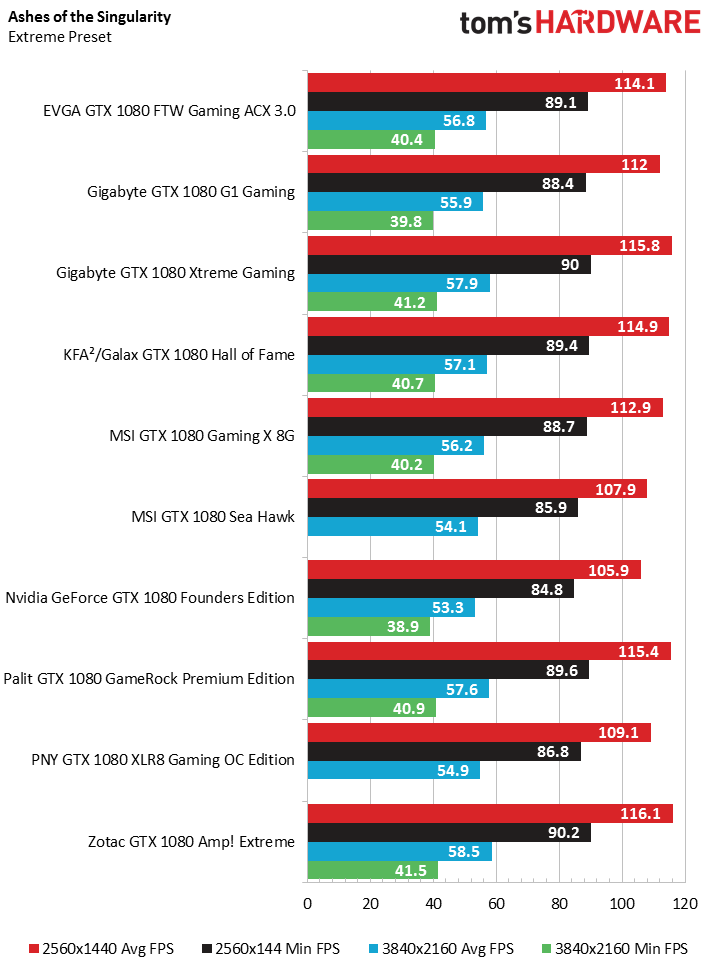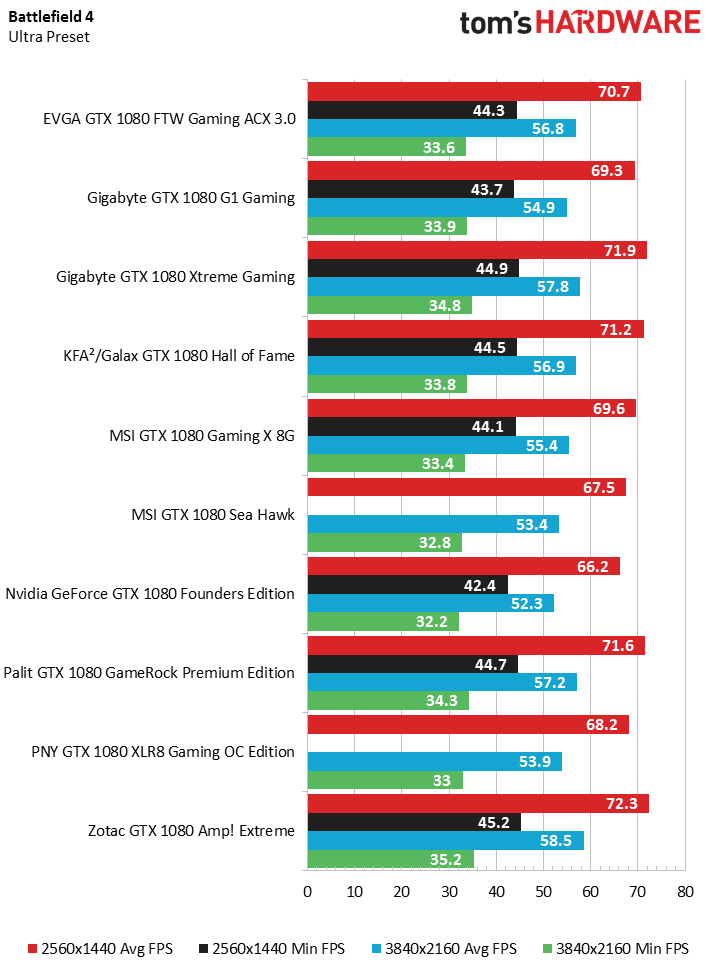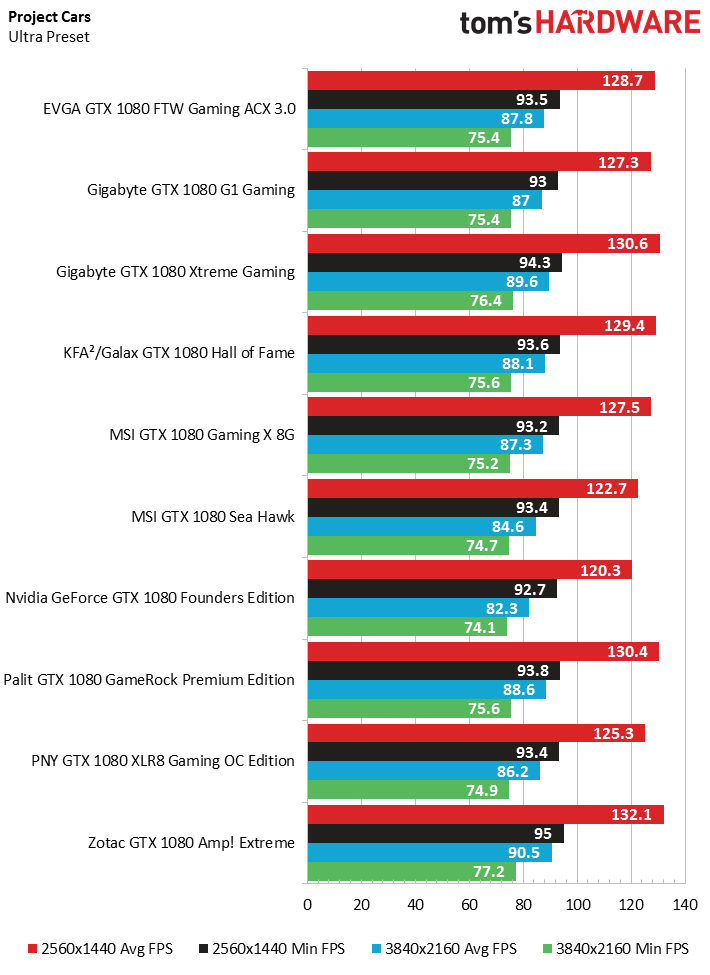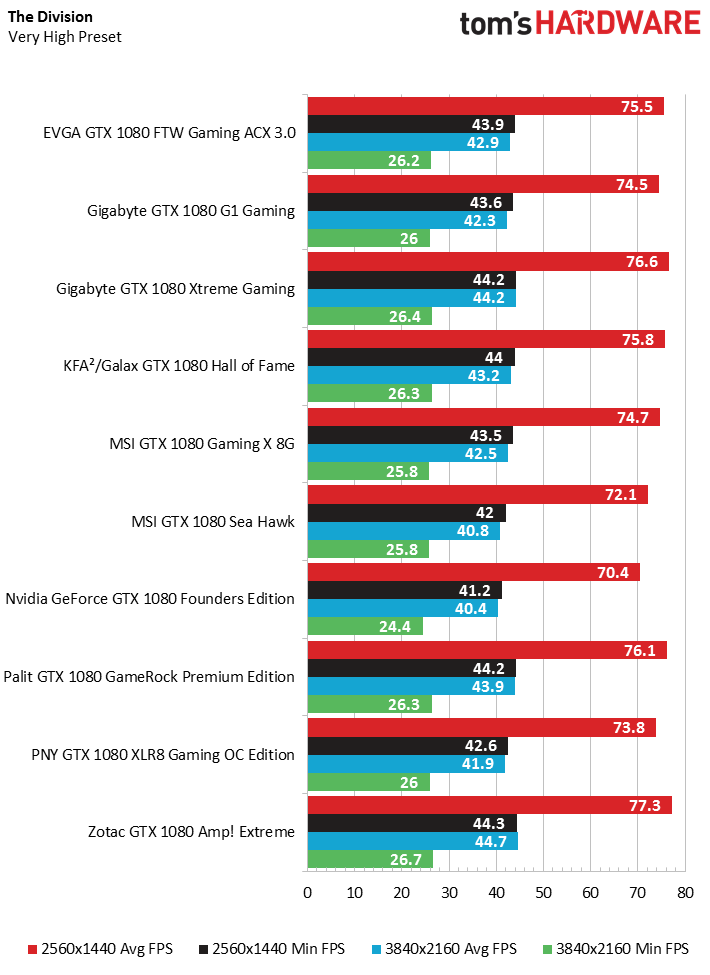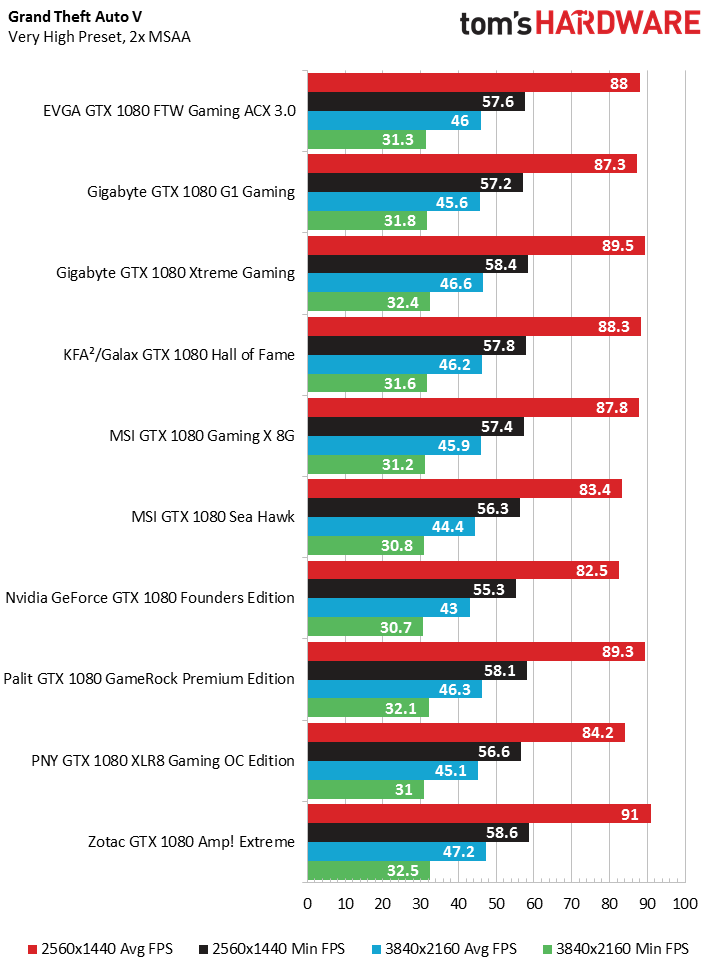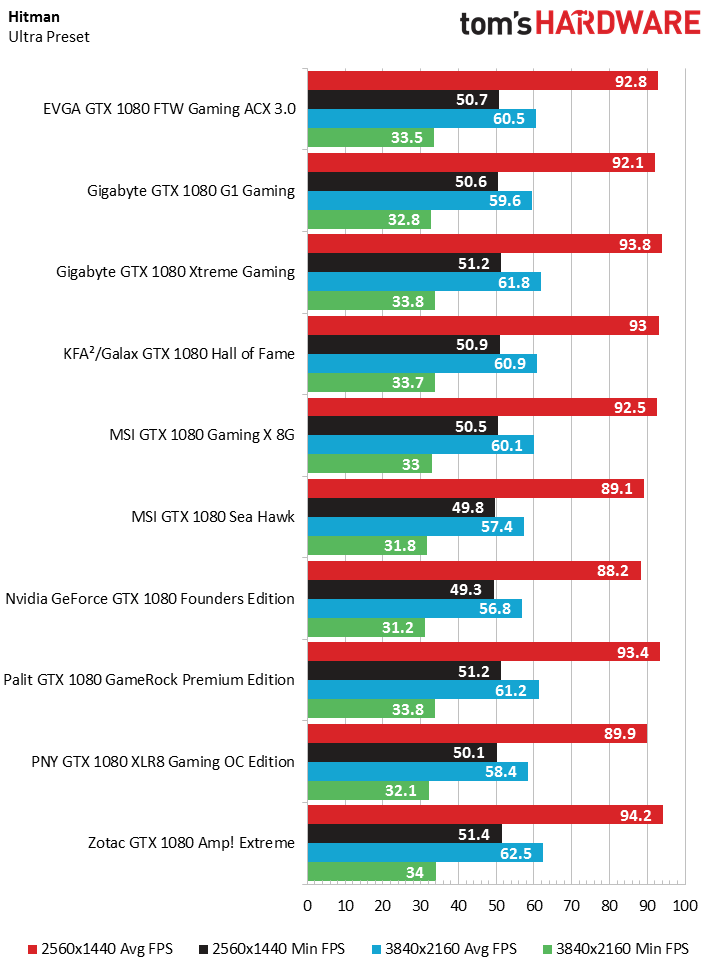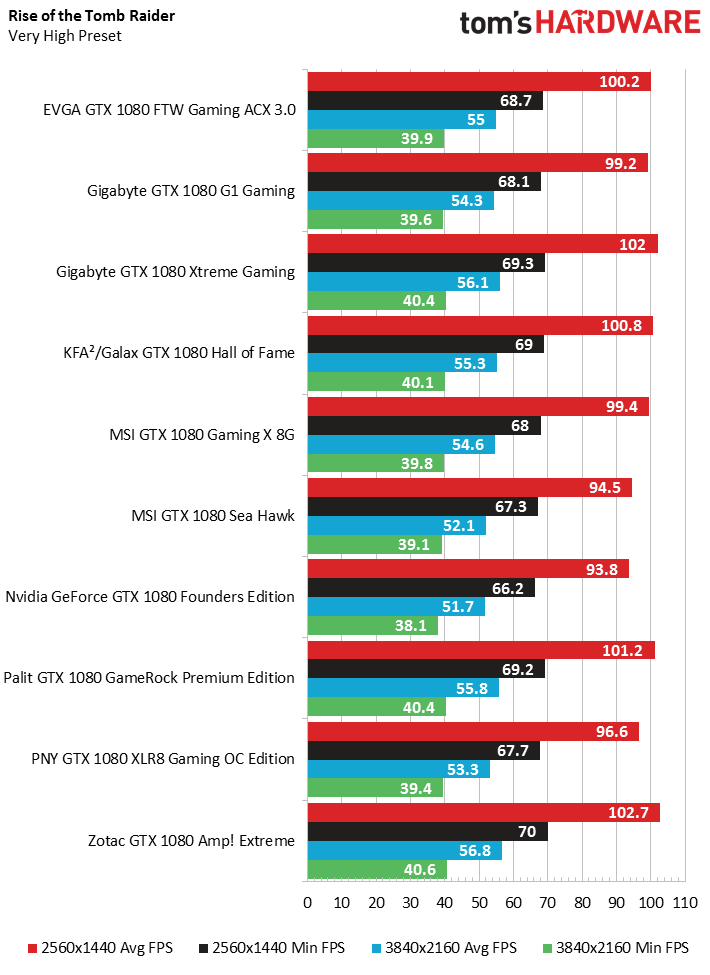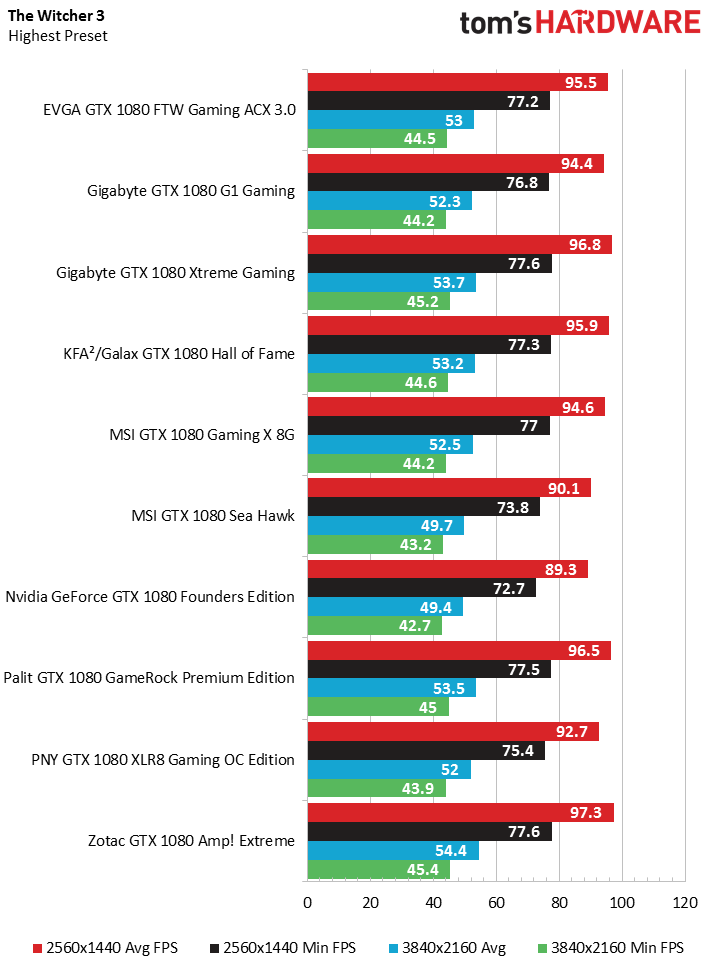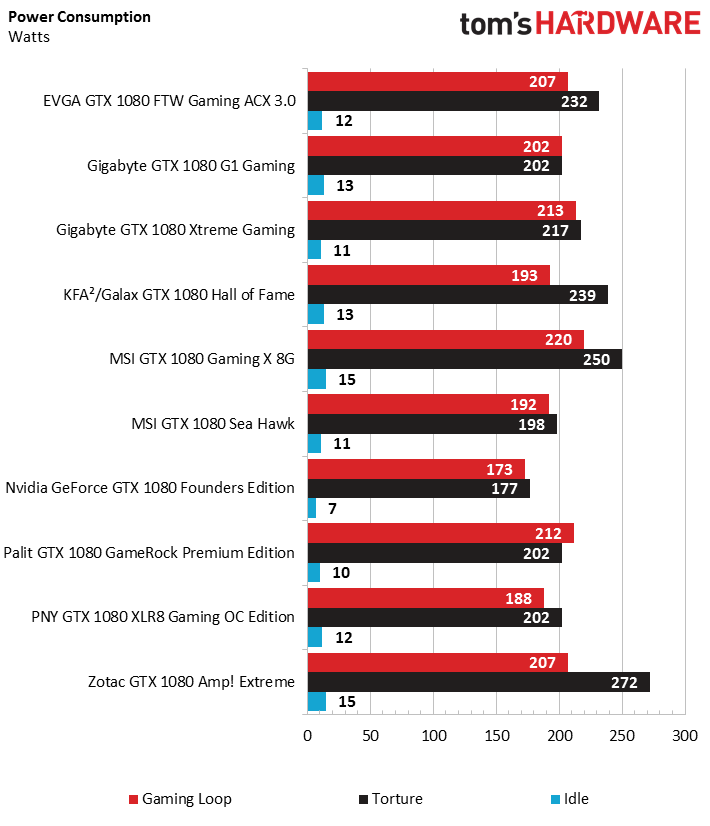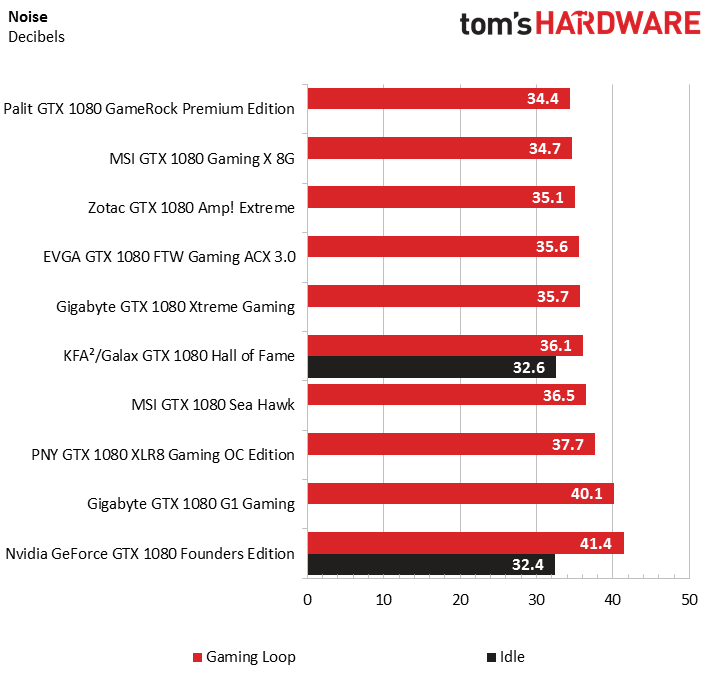Nvidia GeForce GTX 1080 Graphics Card Roundup
Benchmark Results
Why you can trust Tom's Hardware
Gaming
We test every card after a suitable warm-up period to avoid unfair differences in GPU Boost frequencies. All benchmarks are run six times; the first one is used to get the GPU hot again.
These cards are all press samples operating at the same settings as retail models in our best effort to ensure one vendor doesn't get a leg up on another using non-representative clock rates.
The following galleries each contain four images, covering two tested resolutions. We put our focus on QHD (2560x1440) and UHD (3840x2160), plotting out average and minimum frame rates for each resolution in separate graphs.
All of the factory-overclocked cards offer similar performance, more or less. That's why our primary focus centers on evaluating the more technical aspects of each board design, along with their coolers. This is where differences in noise, power, and temperatures are most likely to come from.
Power Consumption
We begin by comparing the power consumption of each card in our gaming loop, stress test, and at idle. Depending on the power targets specified by each manufacturer, we sometimes measured substantial differences. We're ignoring the decimal places in our bar graphs, since those values are too small and would be within measurement tolerances.
We also found that some cards with lower power targets started to throttle during our stress test, resulting in lower power consumption numbers. This did not, however, have a negative impact on general gaming performance for any of the tested cards, as the stress test merely represents a worst-case scenario.
We confirmed that MSI's retail cards will ship with a slightly lower power target (max. 240 to 250 watts) after an internal discussion and evaluation of our measurements.
This also applies to the BIOS versions with OC mode enabled by default, which employ a roughly 20 MHz-higher base and GPU Boost frequency. In the interest of fairness, we tested both MSI cards using normal mode, without the overclocked base and GPU Boost rates. This doesn't affect our power consumption measurements, though.
Noise
For the following comparison, we divide all of the gallery's bar graphs into gaming loop and idle, even if "noise" in practice spans a wide spectrum and the "character" of the sound varies a lot, with each card having highly individual results. Therefore, it is important not to compare just the absolute numbers, but also the frequency spectrum we're presenting.
Many of the cards implement a semi-passive mode, where their fans remain off when the card is idle. Thus, we refrained from taking measurements in that state. Even in our anechoic chamber, levels of 22 dB(A) and below merely represent ambient noise.
Temperature
For this comparison, we divide the gallery's bar graphs into gaming loop, stress test, and peak temperatures measured on the MOSFETs.
We occasionally compared the temperatures on our benchmark table with those measured inside a closed case and found them to be no more than two or three Kelvin higher.
Since temperatures in a closed case also depend heavily on the enclosure's cooling performance, the only representative and reproducible values are those measured on our benchmark table. Those are the ones we compare.
MORE: Best Graphics Cards
MORE: Desktop GPU Performance Hierarchy Table
MORE: All Graphics Content
Current page: Benchmark Results
Prev Page Introduction & Overview Next Page Nvidia GeForce GTX 1080 Founders EditionGet Tom's Hardware's best news and in-depth reviews, straight to your inbox.

Igor Wallossek wrote a wide variety of hardware articles for Tom's Hardware, with a strong focus on technical analysis and in-depth reviews. His contributions have spanned a broad spectrum of PC components, including GPUs, CPUs, workstations, and PC builds. His insightful articles provide readers with detailed knowledge to make informed decisions in the ever-evolving tech landscape
